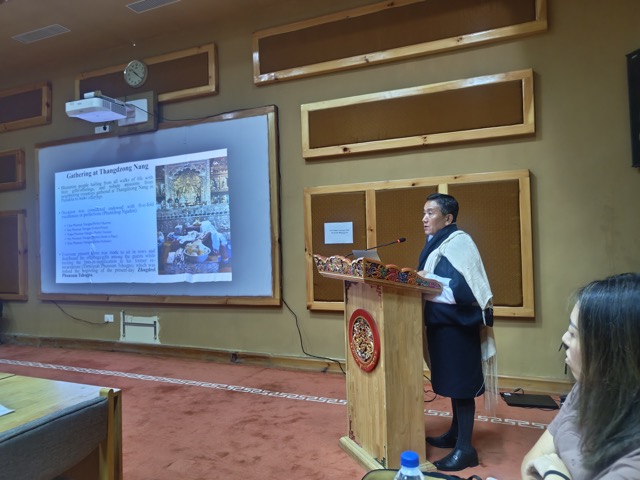First NFT Hackathon for Museums of Bhutan organised by Department of Culture and Dzongkha Development with GovTech
News & Events
First NFT Hackathon for Museums of Bhutan organised by Department of Culture and Dzongkha Development with GovTech
Paro, Bhutan - A two-day NFT hackathon saw the development of ten Non-Fungible Token prototypes of the 18th-century thangka of Zhabdrung Phunsum Tshogpa. Organised by the Department of Culture and Dzongkha Development, the event aims to preserve Bhutanese culture through digital assets.
Non-Fungible Tokens, digital assets representing ownership or proof of authenticity using blockchain technology, were created to symbolise Bhutan’s rich heritage.

The thangka of Zhabdrung Phunsum Tshogpa was chosen due to its strong cultural significance.
“We needed something that was symbolic of Bhutan. There are so many other thangkas of Guru Rinpoche and Sangay Tempa that are more familiar to the world. But Zhabdrung Ngawang Namgyal is synonymous and symbolic of Bhutan’s rich culture and heritage,” said Tshering Uden Penjor, Chief of the Museum Division in the Department of Culture and Dzongkha Development.
Druk Asia, Bhutan Travel Specialist, invited Chanel Lee, Founder of Tasty Toastys, to lead the hackathon and Florence Ang, Partnerships & Marketing Director of Druk Asia facilitated the workshop.
“I think it is actually a good time to explore because the type of people looking to collect preserved culture, they are not buying to speculate the value of the NFT. They do it because they know the value of showing that they own it,” said Chanel Lee, Founder of Tasty Toastys.
GovTech Agency officials also shared a similar perspective.
“We can look at NFT in two aspects. One is to commercialise it in the market and make revenue out of it. The other opportunity is the technology in itself, which is a blockchain-based technology,” said Garab Dorji, Chief of the Emerging Technology Division of GovTech Agency.
The hackathon attracted 16 participants from diverse backgrounds in technology, arts, entrepreneurship, and culture, most of whom were new to creating NFTs.
“This event is very important because even His Majesty’s vision is also included in this event. Say for the Gelephu Mindfulness City, I think technology will play an important role,” said Tshering Wangdi, a participant.
“I think Bhutan has a depth of culture and richness that has not been tapped into, especially in terms of NFTs, where we can convert Bhutanese art like thangka paintings into NFTs,” said Wangdrak Dorji, another participant.
There are plans to create digital assets from over 6,000 artefacts housed in the country’s museums, including the National Museum of Bhutan in Paro, the Royal Heritage Museum in Trongsa, and the Textile Museum in Thimphu.
